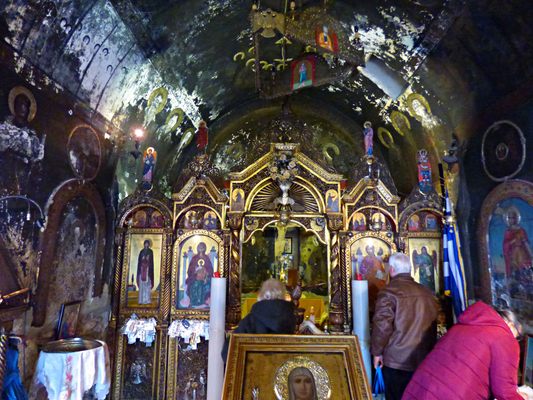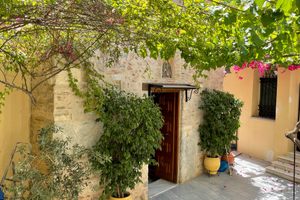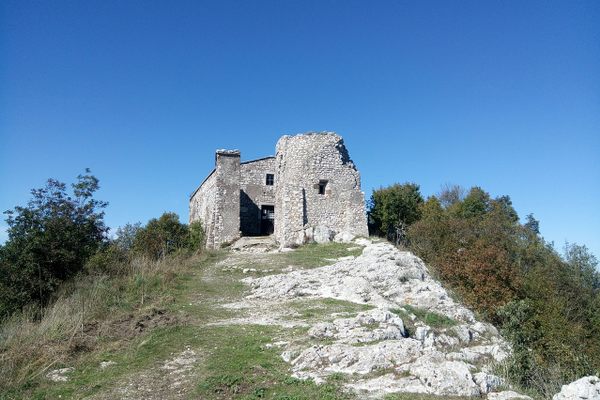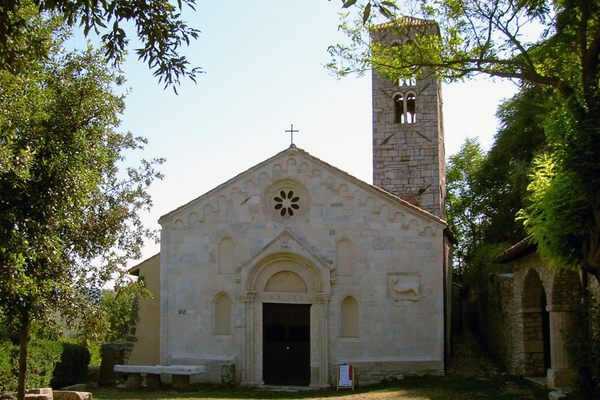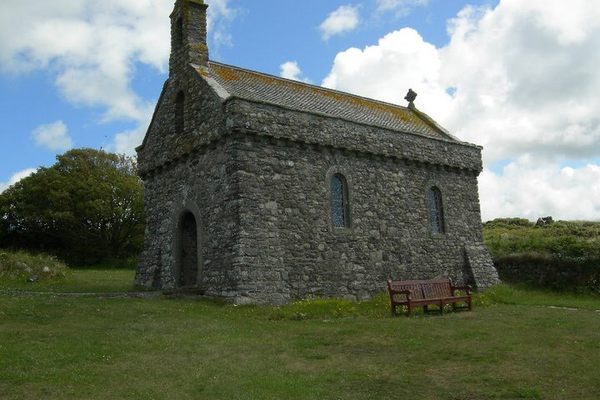About
This Ottoman-era Greek Orthodox church was built to honor Agia Kyriaki, a Christian saint martyred under the Roman emperor Diocletian.
Kiriaki was born to Dortheus and Eusebia on a Sunday (Kyriaki is the Greek word for Sunday). At an early age, Kyriaki dedicated her life to religion. When she was 21, a Roman magistrate took notice of her and decided she would make an ideal bride for his son. When the magistrate spoke to Kyriaki and her parents about the potential marriage, Kyriaki informed him that she had dedicated her life to Christ and rejected his proposal. The magistrate did not take the rejection well and denounced the entire family to Diocletian, who promptly ordered them arrested and tortured. After several extensive sessions of torture, Kyriaki was decapitated. Local Christians took her remains and buried them, with the exception of her skull, which was taken to the Sacred Monastery of the Archangels.
After the Ottomans took control of Greece in 1453, the treatment of Christians varied from sultan to sultan. Some rulers allowed freedom of religion, while others restricted or prohibited it. In the early 1600s, local residents built a church in the commercial district of Athens. This tiny church was built quickly, as the residents feared the sultan at the time would interfere with their efforts. They quickly completed a single-aisle basilica church that was 3.5 meters (11.5 feet) wide and 11 meters (36 feet) deep and dedicated it to Agia Kyriaki. Later in the Ottoman period, unique frescoes were painted on the interior walls.
Following the victory in the Greek War of Independence in 1830, many buildings in the area were demolished in the name of modernization. These demolitions have continued in the time since, but the Greek Orthodox Church has successfully resisted all attempts of the seizure of the valuable land that the Church of Agia Kyriaki sits on, and it is still present on one of the busiest streets in downtown Athens.
Related Tags
Know Before You Go
The church is open sporadically during the week, holds services most Sundays, and celebrates a feast in honor of the saint annually on July 7. Dress codes vary from church to church in Greek Orthodoxy. If you wish to enter the church, a proper show of respect to the church and its members is achieved by modest clothing and proper behavior. For men, shorts, tank tops or sleeveless shirts, and sandals or flip-flops are frowned upon. Women's shoulders should not be shown in church, so anything strapless or with thin straps should be avoided. Skirts and dresses should, at a minimum, come below the knee. Some churches ask that no leg be shown. Feet should be kept on the ground when seated, as it is considered insulting for the bottoms of feet to face holy images.
Community Contributors
Added By
Published
August 12, 2020







